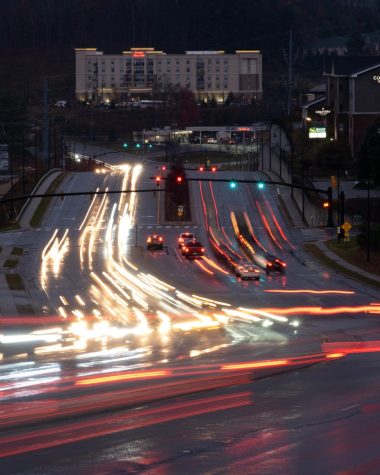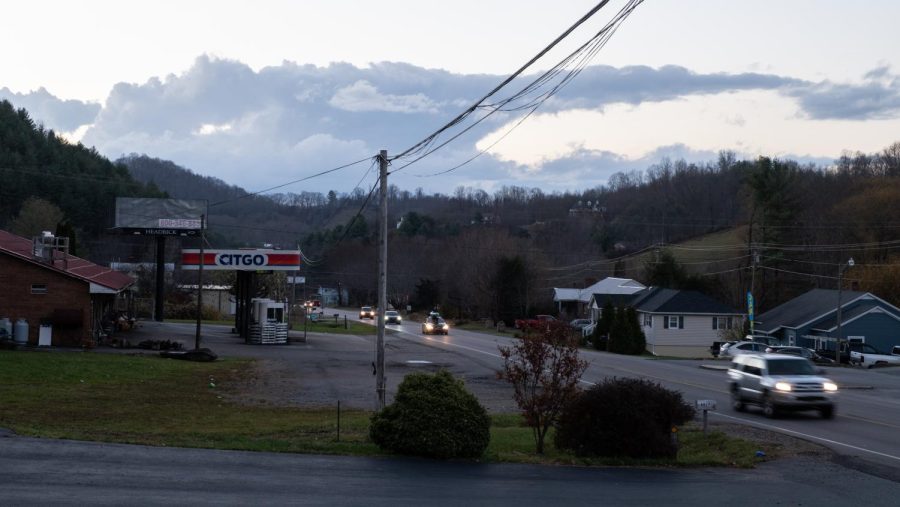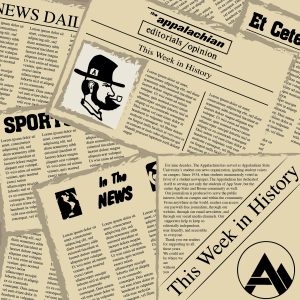US 321/US 421 expansion to impact local landowners, cost $92.6 million
Expansion will take place on U.S. 321/U.S. 421 toward Vilas, widening the road from two lanes to four lanes.
November 16, 2022
New plans for the U.S. 321/U.S. 421 expansion project, running through Vilas to Boone’s N.C. 105 Bypass, show how the project will impact local landowners as the project aims to resolve current and anticipated congestion on the road. The project would expand the road from a single lane to two lanes in each direction, according to the project website.
“This is pretty doggone early in the process of improving this highway,” said North Carolina Department of Transportation Communications Officer David Uchiyama. “Public involvement is an important part of any significant transportation project.”
At the meeting, NCDOT officials proposed three plans for the widening project: a “left side” widening plan, a “right side” widening plan and a “best fit” widening plan.
The best fit plan shifts the alignment of the widening project from one side of the road to another throughout the project, “enabling engineers to reduce impacts that would otherwise result if the widening occurred entirely on one side of the roadway,” according to the project overview from an Oct. 13 meeting.
Each plan indicated different aspects of construction which may impact businesses, residencies and historic sites, along with bodies of water. As the project is still in an early stage, it has not yet included a best fit model for the area of U.S. 321/ U.S. 421 that runs through Vilas.

The “best fit” model sees 38 single family residences, one multi-family residence, seven businesses, and one historic site and streams affected by the widening project.
Impact numbers are subject to change as more detailed designs are completed. Though all dates are subject to change, construction on the proposed plan would begin summer 2027 and end summer 2030, according to the project overview.
“It looks like any of the proposals are going to affect us somewhat,” said Bill Dishman, who owns property off of U.S. 321. “So I don’t guess I have a favorite. A couple are better than one of them.”
During the meeting, residents and interested citizens were encouraged to make comments on current proposals. Responses to the project were varied, with many expressing both positive and negative impacts that the project could have.
“I think it looks good,” said Shaun Kelly, who lives in Vilas. “I mean, it’s going to take a lot of people’s properties and stuff, but this road is very busy. And, if there’s ever a wreck, it gets locked up for hours and hours.”
As current traffic volumes in the area are around 14,000-15,100 vehicles per day, the expansion aims to “alleviate current congestion and accommodate for future growth in traffic” anticipated as “Boone and App State continue to experience growth,” according to the project overview.
According to a 2018 version of NCDOT’s Watauga County Comprehensive Transportation Plan, approximately 19,500 vehicles will be expected to travel on the road every day by 2040; a 29% increase in overall traffic from 2022.
“I see with Boone growing that it is a lot busier, and that its a pretty main highway to just be a two lane road,” business owner Zach Church said.
Church attended the event in hopes of learning how the highway expansion may affect his business. Church, who runs his family business, RC Motors, just off of U.S. 321/ U.S. 421 in Vilas, said that the “best fit plan looks like the best fit.”
The best fit plan runs narrowly around Church’s business, while the other two plans would place his business within the project right of way.
All land located within the project right of way can be subject to acquisition by the NCDOT for project construction. Those with land that falls within the right of way of the final project can expect to be contacted by an NCDOT right of way agent who will advise how property will be affected, inform you of your rights as a property owner and help navigate relocation or the sale of land, according to the NCDOT right of way guide.
“The only other solution that would come sooner than widening the road I think would be a lower speed limit,” Church said. “Maybe it’d make it safer.”
Nikki Robinson, a Boone local, visited the forum with worries about the plans impacting “wildlife movement across this busy highway.”
“I think so far it looks good,” Robinson said. “I think they are at some really preliminary stages. I don’t know how exactly that is going to impact wildlife, but the staff seem willing to have that conversation. So I am happy with that.”
Environmental documentation for the project is projected to be completed spring 2024.
Uchiyama said that the current project is still in preliminary stages, meaning that many questions do not have definitive answers.
Due to the current conceptual phase of the project, definitive answers on how the project may change or how the project may affect landowners may not be immediate, Uchiyama said.
“The project team reviews every single project in question,” Uchiyama said. “And usually they’re categorized because we see common themes and then an answer is provided on the project.”














